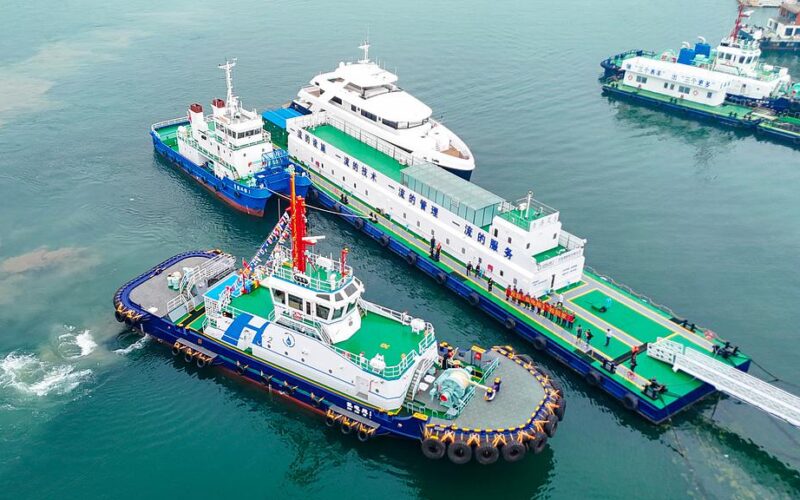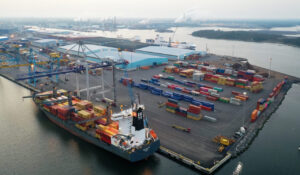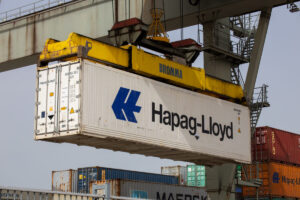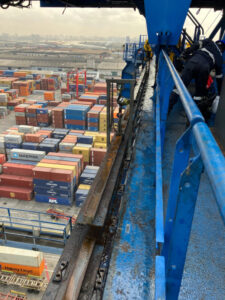Feature Image: © China News Service
China has officially commissioned its first hydrogen-electric tugboat at Qingdao Port, marking a significant step in maritime decarbonisation and the advancement of zero-emission port operations.
The vessel, named Hydrogen-Electric Tug No.1 or Qing Dian Tuo 1, began operations on 26 June 2025, following its construction by Jiangsu Zhenjiang Shipyard and development by the Liangang Innovation Team at Shandong Port Qingdao Port Group Co., Ltd.
The tugboat is equipped with a hybrid propulsion system that combines hydrogen fuel cells with liquid-cooled lithium batteries, enabling fully zero-emission operation during harbour towage.
READ: Port of Rotterdam launches pilot with electric hydrofoil vessel
According to available technical data, the vessel is capable of operating for more than 12 hours at a speed of 9 knots on its hybrid system. Its towing force is reported at 82 tonnes, making it one of the most powerful harbour tugs in China and the country’s first to achieve this level of performance using hydrogen and battery technology.
Onboard automation and navigation are supported by the Beidou satellite navigation system and a fully automated, intelligent shore-based charging setup.
Port officials have highlighted that the deployment of the hydrogen-electric tug is expected to reduce annual carbon dioxide emissions by more than 1,500 tonnes compared to conventional diesel-powered vessels.
The vessel’s introduction also brings improvements in noise reduction, equipment lifespan, and energy efficiency.
Just recently, COSCO SHIPPING Heavy Industry Yangzhou officially delivered China’s first 16,000 TEU methanol dual-fuel containership, the COSCO SHIPPING YANGPU, on Changxing Island, Shanghai.
This marks three key shipbuilding breakthroughs: the first order by a Chinese shipowner, the first delivery by a Chinese shipyard, and the first real-ship use of a domestic methanol engine.








